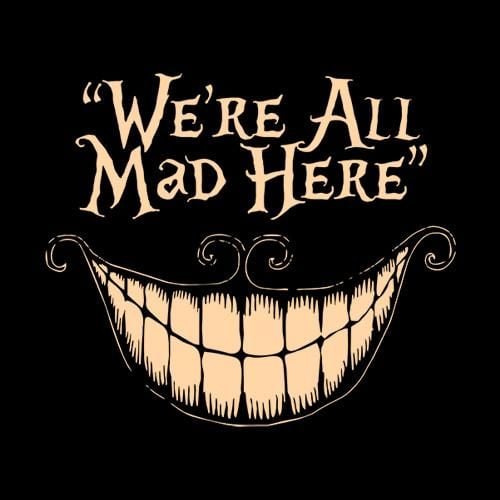cross-posted from: https://lemmy.world/post/2207898
Did you ever hear the tragedy of WebP The Efficient? I thought not. It’s not a story the GIF gang would tell you. It’s an image legend.
WebP was a new format of pictures, so efficient and so lightweight, it could use modern compression to influence the web pages to actually load faster…
It had such a knowledge of the user’s needs that it could even keep transparency and animations from dying.
The power of modern computing is a pathway to many abilities some consider to be unnatural.
It became so widespread… The only thing we had to be afraid of, was people insisting on using formats from the 90’s, which eventually, of course, they did.
Unfortunately, we didn’t teach the noobs everything we knew about compression, then the noobs killed the format by converting it to PNG and sharing that.
Ironic. We could save the web from being too slow, but not from the users.
 Ofcourse I know him. He’s me
Ofcourse I know him. He’s meKill him. Kill him now.
Seriously… Please don’t. Or at least don’t ever share that shit back to the web. It gets even worse when people then rename the png to jpg and it’s a whole fucking mess. I’ve been trying to figure out where the hell all those bloated hi-res pngs all over the web come from, until I stumbled upon this answer.
Just download an updated app that can read webp for crying out loud. Do people convert x265 to QuickTime too?
Besides, everywhere where I’ve encountered webp in the wild, the image url has something like ?format=webp at the end, so you can just delete that and get the original, if you really have to.
It was on by default for me, but I’m also not downloading pictures to repost so it’s fine.
What client is that?
Liftoff
Good damn it…
I’ve got jerboa, thunder, wefwef… And now liftoff.
It’s like I’m going for the fucking infinity gauntlet
Thanks!
Edit: STOP FUELING MY ADDICTION :'(

And that’s just the FOSS options
Oof you’re further down the rabbit hole I see :']
Liftoff
A screenshot saved as jpeg? You’re trolling, right?
Webp is just one more instace of Google trying to own the modern web.
Give me JPEG XL or give me death, motherfuckers.
Webp… For web pictures. Then why are there webp files on my non web harddrives? Give me PNG, SVG, JPEG and GIFs. Not this ugly Google shit. I never liked it in the first place. And take your shitty webm with you.
They are smaller and higher quality, why use archaeic formats?
Who needs smaller files? We have compressed data streams since ever. Also we use “archaic” formats because the web is built on backwards compatibility.
Also higher quality? You can’t get higher than lossless (PNG, TIFF) anyway. And JPEGs are good enough for photos. Also you know what kind of picture you have by it’s minetype or file extension. With webp? Well it’s a box of chocolate.
While I agree that unique file extensions for each image category are very convenient, this is overall an absurd take.
You can’t get higher than lossless (PNG, TIFF) anyway
PNGs have horrendous compression. Like, it’s notorious for that.
And JPEGs are good enough for photos.
This is just wrong. Modern formats have astonishingly better reproduction, especially for images of things like text. Some formats are also designed to mitigate artifacts caused by re-saving. No more “too much JPEG”.
All that being said, I don’t think WebP is the answer. JPEG-XL is better in so many ways, and if we’re going to make a switch, it should be to a format that is definitively the best option.
Webp… For web pictures. Then why are there webp files on my non web harddrives? Give me PNG
You know what the N in PNG stands for?
Yes, my harddrives are in my network.
I’m still mad over the JPEG xl drama
JPEG XL, the one true king.
Compatibility be damned.
Jpeg is not what makes the Web slow. The dozens of requests to Google and all the add services and then the add videos.
When an addblocker makes the page loads so much faster, webp is definitely not what will save Internet.
I’m against using a Google OS (Android, Chrome OS), to browse on a Google regulated web (Manifest V3), based on a Google protocol (Protobuf) loading pages via Google proxies (Google AMP) filled with Google Ads displayed using a Google format (webp, webm), while everything is recorded and fingerprinted to update my Google Ad Profile.
No, thank you very much!
More open formats, more open Internet! Down with Google!
Shit like this is why people look down on the Fediverse. You’re in /c/Memes, not your usual fedora wearing, neckbeard vegan channel.
It’s still a godsend for large comic book archives. Thx comicrack for supporting this wicked new format since August 2013!
edit: there’s also a relatively new plugin for avif and jpegxl support.
If you look into it a bit more, the resistance around WebP is mainly because it has some crippling weaknesses. I did some visual quality testing ( here, here & here ) & I (as well as many others independently) have found that for photographic images, WebP & JPEG are equals, & Google’s messaging that lossy WebP meaningfully improves upon JPEG for general visual quality per bit is misleading. That being said, WebP has some important strengths that are not often acknowledged. In addition to transparency & (really good) animation support, it also has:
- a lossless mode that often outperforms PNG
- great nonphotographic compression (though AVIF outperforms it here)
- decent compression of photographic sources at lower fidelity, where it actually starts to beat JPEG by a good amount
- Totally royalty free
WebP’s main weaknesses are:
- not better than JPEG for photographic images at useful fidelity
- Confusing messaging from Google, may have led to slow adoption
- Based on a video codec, so no progressive decode (even JPEG has this)
- limited to 8 BPC (lossy & lossless)
- superseded by JPEG-XL & AVIF, which are both pretty much better at everything
JPEG-XL in particular is very promising. It faces hostility from Google but has an incredible breadth of features & strong compression performance, as well as Apple ecosystem-wide adoption on the way with the upcoming versions of macOS, iOS, ipadOS, etc. It is also royalty free. AVIF is better than WebP at everything except lossless, too.
Feeling any which way about WebP, it is still a shame to see it transcoded to PNG. All that wasted potential …
What about the bot attack on the bitmaps?
Ios can’t play webm. can it show webp?
People say it does.





